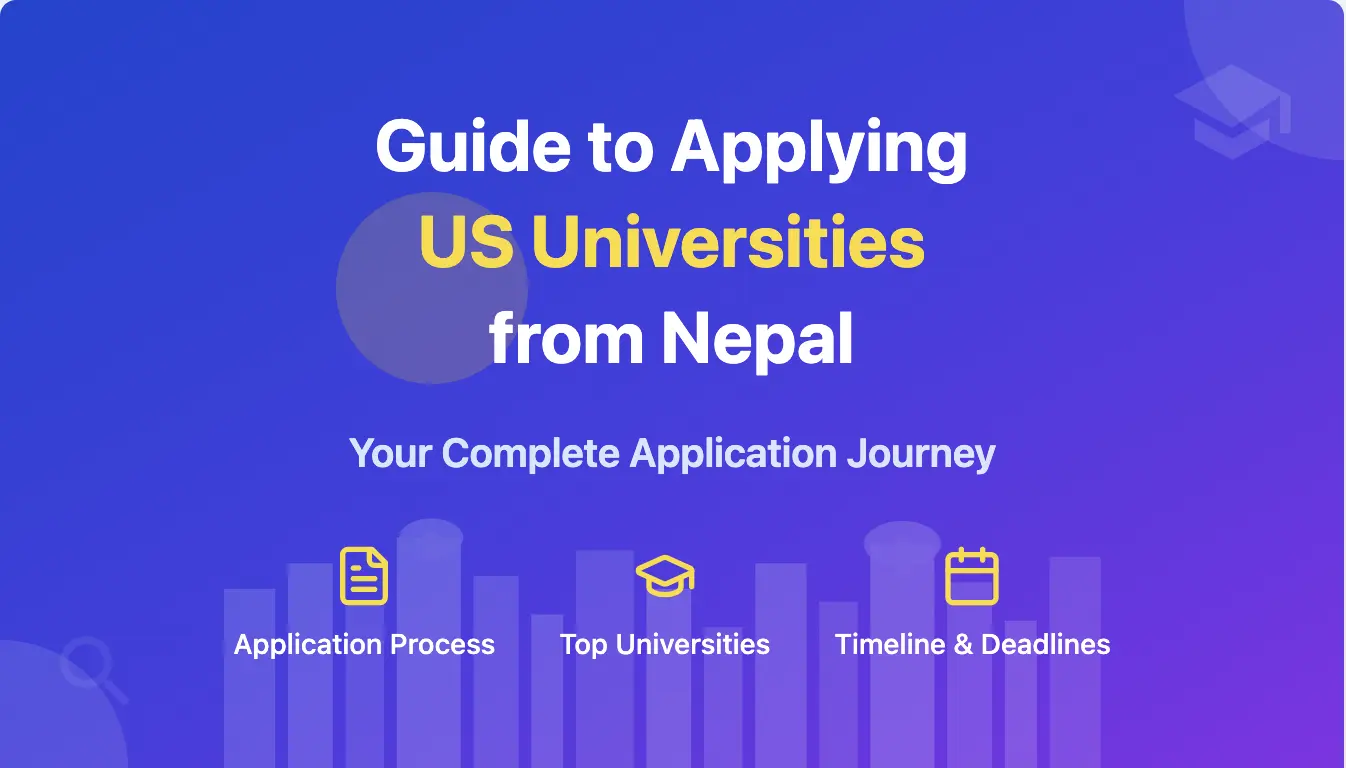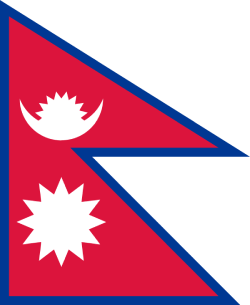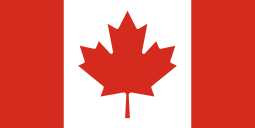Your Step-by-Step Guide to Applying to US Universities from Nepal
If you plan to study in the USA from Nepal after +2, you’re already making a strong choice.
The US offers unmatched academic flexibility, real career opportunities, and global exposure.
But here’s the truth: most students start the process without knowing where to begin.
You might be thinking:
- What even is an F1 visa?
- Do I need IELTS if I’ve studied in English already?
- How do I even apply to a US university — is it all online?
- What documents do I need? What’s an I-20?
- Where do students live? Can I work part-time?
These are the most common questions that even your typical class topper gets confused with.
Understanding that the application process is new, the system is different, and the feeling of not wanting to mess it up sounds normal.
We have prepared this step-by-step guide for you, aiming not to overwhelm you with university rankings or generic advice, but to walk you through each stage of the process as clearly as possible.
So that you know exactly what your next step should be.
Step 1: Choose the Right University
The first step isn’t filling out a form, but it’s deciding where you’re going and why.
You have probably heard these big names like Harvard or MIT, but are they good for YOU?
Your best university is the one that matches your academic background, financial capacity, and career goals.
It’s about finding a place where you’ll thrive academically, financially, and personally.
When shortlisting universities, keep these in mind:
- Accepts your GPA and background
- Fits within your budget
- Offers the course you want
- Doesn’t require unnecessary tests (like SAT, GRE, GMAT, if not needed)
- Is SEVP-certified (required for the F1 visa)
And always use trusted sources. Avoid random blogs or videos.
Use official university websites and get help from a trusted education partner like Goreto Educational Consultancy.
Step 2: Understand Intakes and When to Apply
Unlike Nepal, where most universities have one intake, universities in the US have multiple intakes each year.
And choosing the right one matters a lot.
| Intake | Starts In | Application Deadline | Importance |
| Fall Intake | August/September | Dec-March (varies) | Best for Scholarship, and most programs are available |
| Spring Intake | Junuary | July-September (varies) | Fewer programs and less competitive |
| Summer Intake | May/June | Not common for undergraduates | Mostly short or optional courses |
The Fall Intake is the perfect and ideal intake for Nepali students.
It gives you enough time after +2 or bachelor’s results to prepare documents, apply for universities, take English tests, and get your visa.
Another advantage of the fall intake is that the students are exposed to most scholarships, and it is when the biggest orientation events happen.
Missing the Fall deadline may still leave Spring Intake as a viable option, though fewer universities provide admissions and scholarships at this time of year.
Having the necessary documents prepared in advance, including transcripts, recommendation letters, and financial evidence, can significantly streamline your application process.
Let’s break down what you need for a strong and complete application in the next step.
Step 3: Prepare Your Application Documents
After you have narrowed down your list of possible institutions and chosen one, the following step is to have the application paperwork ready.
It is much easier to handle once you know what is needed.
The documents that most university application requires are:
| Document | What It Is / Why It’s Needed |
| Academic Transcripts | Marksheets from Class 10, +2, or Bachelor’s (if applying for Master’s), which show your academic background |
| Character Certificate | Issued by your school/college, verifying your conduct during study |
| Provisional Certificate / Completion Letter | Shows you’ve officially completed your course |
| Passport | A valid passport is mandatory for international students |
| Statement of Purpose (SOP) | A personal essay where you explain why you want to study in the US, what course you’ve chosen, and what your plans are. |
| Letters of Recommendation (LORs) | Written by your teachers or professors, which highlight your strengths, attitude, and academic performance |
| Bank Statement or Financial Proof | Shows you or your sponsor can afford your studies (tuition + living expenses) |
| Resume or CV (if applying for a master’s) | List your academic achievements, work experience, and skills |
When To Start Preparing?
Waiting for your final results is not necessary.
As long as you present your final grades later, the majority of US universities will accept applications with provisional documents or anticipated grades.
Start collecting your documents at least 6–8 months before your intended intake.
Once your academic and personal documents are ready, the next major step is proving your English language ability.
Step 4: Take Your IELTS or PTE Test (English Requirement)
If you intend to study in the USA, you must demonstrate your proficiency in the English language, particularly if your education was not conducted in English.
The tests most frequently accepted by universities in the US include:
- IELTS (International English Language Testing System)
- PTE Academic (Pearson Test of English)
- TOEFL (Test of English as a Foreign Language)
What Scores Do You Need?
| Level of Study | IELTS | PTE |
| Undergraduate (Bachelor’s) | 6.0–6.5 overall (minimum 5.5 or 6 in each band) | 50–58 |
| Postgraduate (Master’s) | 6.5–7.0 overall (minimum 6 in each band) | 58–65 |
(Note:Note: Leading universities and particular programs, such as Nursing or Law, might require elevated scores.)
It is advisable to complete your IELTS or PTE exam 6 to 9 months before your intake.
This allows you extra time to retake your exam if your score fails to meet the criteria, and to include scores with your college application.
Step 5: Shortlisting and Applying to Universities
As we discussed earlier, while selecting the ideal university for you, it’s essential to examine your career aspirations and academic passions to ensure you make the best decision regarding your courses.
This is your time to turn those answers into action.
This step is more focused on finding the right fit, making sure you thrive academically, feel at ease as an international student, and receive a worthwhile return on your investment.
How Do You Apply to Universities
Once you’ve shortened your list of universities, the next step is to submit your applications to those shortlisted universities.
Universities may use different methods of accepting applications, depending on their size, type, and programs.
Here are the three main methods that most Nepalese students use to apply:
1. Direct Application (Most Common for Master’s & a Few Undergraduate Programs)
The maximum number of public universities in the US, and almost all master’s programs, will require you to apply directly from their official university websites.
You need to visit the university admissions website, set up an online account, and fill up your personal and academic information.
You must submit the necessary documents along with the application fee.
2. Common App (Popular for Undergraduate Applicants)
A central platform that allows you to apply to 1,000+ universities simultaneously.
Steps include:
- Sign up at commonapp.org
- Fill out your profile and academic info
- Upload your SOP (called Personal Essay)
- Add recommenders
- Select and customise applications
- Pay per university and submit
3. Coalition Application (Less Common)
Coalition Application is an alternative to the Common App that also supports underprivileged and first-generation students.
It is available at www.coalitionforcollegeaccess.org, and only 150 universities accept this method.
Step 6: Prepare Your Finances and Apply for Scholarships
Before you start on your applications or visa, it’s essential to clearly understand the costs involved, find ways to demonstrate proof of funds, and understand the situation of scholarships or financial aid available for you as a Nepali student.
Estimated Cost Breakdown (1st Year)
| Category | Estimated Cost (USD) | Approx. in NPR |
| Tuition (Bachelor’s) | 15,000 – 30,000 | NPR 20 – 40 Lakhs |
| Tuition (Master’s) | 20,000 – 40,000 | NPR 27 – 54 Lakhs |
| Living Expenses | 10,000 – 15,000 | NPR 13 – 20 Lakhs |
| Application Fees (5-8 unis) | 300 – 800 | NPR 40,000 – 1.1 Lakhs |
| IELTS / PTE Test | 200 – 250 | NPR 27,000 – 34,000 |
| SEVIS fee | 350 | NPR 47,000 |
| Flight Ticket | 1,000 – 1,500 | NPR 1.3 – 2 Lakhs |
Financial Documents You’ll Need
When you apply for your visa, you’ll need to show that either you or your sponsor (usually parents, relatives, or educational supporters) can afford your studies.
Here’s what typically works:
- Bank balance certificate (recent, with enough funds)
- Bank statements (past 6 months)
- Property valuation or income sources (if needed)
- Affidavit of support from your sponsor
Make sure to check if these documents are updated and clearly show the source of income or not.
Any mismatch could lead to delays in your visa approval.
Scholarships for Nepali Students
| Scholarship Type | Who It’s For | What It Covers | Where to Find It |
| Merit-Based Scholarships | High GPA, strong IELTS/SAT/PTE, leadership, or activities | Partial to full tuition | Offered by most universities (check each uni’s website) |
| Need-Based Financial Aid | Students from low-income families with strong academics | Tuition + living (varies by uni) | Mostly at private colleges (like liberal arts colleges) |
| International Student Scholarships | All international applicants (open to all nationalities) | Usually partial tuition | Check the university’s International Admissions section |
| External Scholarships | High-performing Nepali students (separate from universities) | Tuition/living, one-time or renewable | EducationUSA, Fulbright Nepal, USEF, local NGOs & banks |
| Graduate Assistantships | Master’s students (research/teaching support roles) | Tuition waiver + monthly stipend | Offered by specific departments (especially STEM/Business) |
Step 7: Apply for Your F1 Student Visa
Once you’ve received your I-20 form from a US university (meaning that you have been officially accepted), the next big step is to apply for your F1 Student Visa.
What is the F1 Visa?
The F1 visa is the most common student visa for international students in the USA. It allows you to:
- Study full-time at a US college or university
- Work part-time on campus (up to 20 hours/week)
- Stay in the US for the duration of your studies, with optional post-study work opportunities.
Visa Application Process (Step-by-Step)
- Receive Your I-20
- Pay the SEVIS Fee
- Complete the DS-160 Form
- Pay the Visa Application Fee
- Schedule Your Visa Interview
- Attend the Interview
Documents Require
- Academic Documents
- Admission Proof
- Financial Documents
- Identity Documents
- Visa Fee and Appointment
- Optional Documents (Income source proof, family tax documents)
(Note: You can apply for your F1 visa up to 365 days before your course starts, but the visa will be valid for entry only 30 days before the course begins.)
Reading all this must have made you feel overwhelmed.
The new system, different timelines, financial documents, interviews, and catching a flight, yet thousands of Nepalese students have done it successfully every year, and so can you.
You just need the right guidance at each step so that you will not only avoid common mistakes but also give yourself the best chance at getting into a good university, with a scholarship, a smooth visa experience, and a bright future.
Goreto Can Be Your Best Guide
At Goreto Educational Consultancy, we have guided thousands of Nepali students, from choosing the right course and university to preparing SOPs, financial documents, and F1 visa interviews.
Whether you have planned for the Fall or are still unsure about where to start, the Goreto Team offers personalized counselling, document reviews, deadline tracking, and everything else you need, all in one place.
Let us be your best guide.
Talk to our expert counsellors today, or message us directly on WhatsApp to begin your application journey to the USA.



